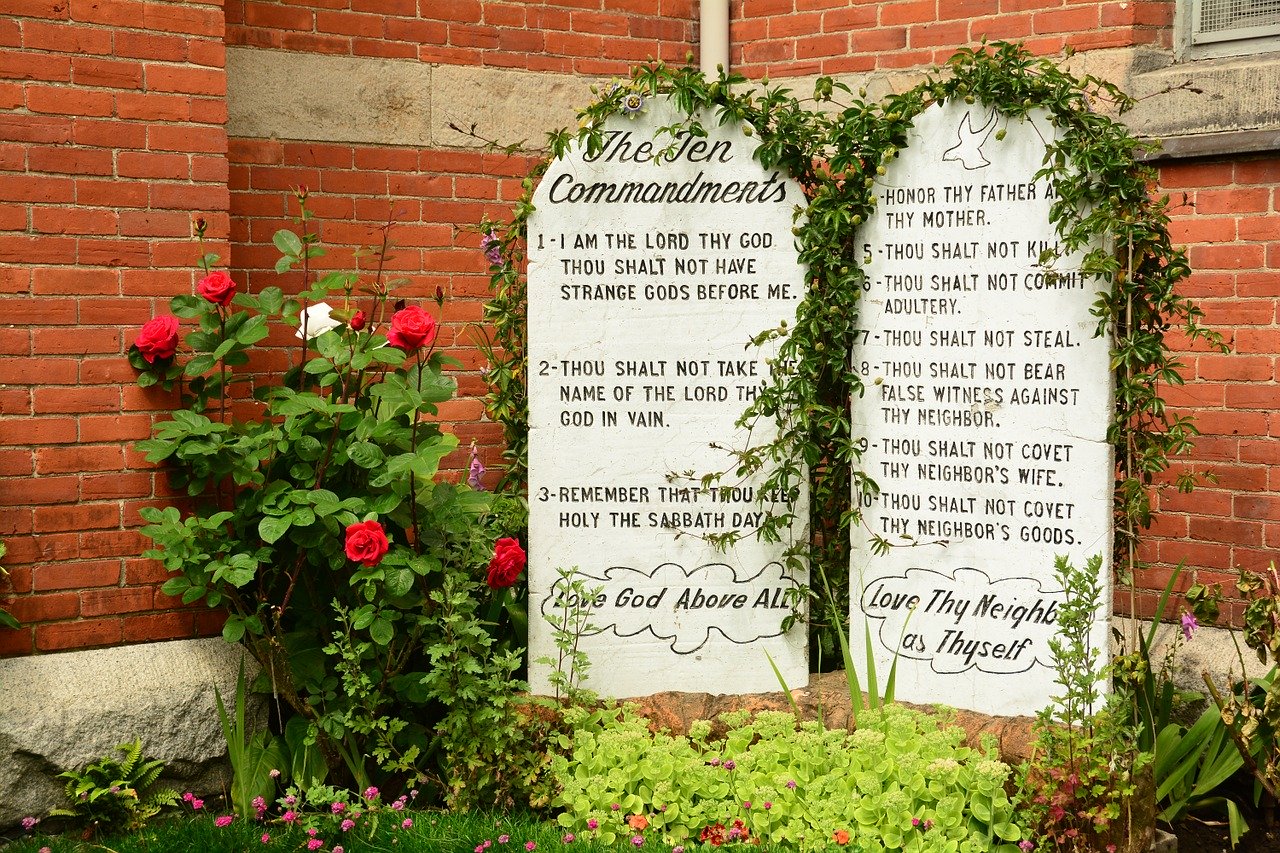There are four types of tithing Ancient Israel paid: Levitical Tithe, Tithe of the Tithe, Festival Tithe, and Poor Tithe. There is some debate over how many tithes the ancient Israelites paid. Generally, three tithes are cited. But technically, there are four tithes mentioned in the Bible.

Table of Contents
- Watch the Video
- The Tithe Becomes Law
- The First Tithe
- The Tithe of the Tithe
- The Second Tithe
- The Third Tithe
- FAQs About Tithes
- Conclusion
- Outsmart the False Teachers
Watch the Video
The Tithe Becomes Law

The tithe has an interesting history. The Lord established the tithe system through the Mosaic Law Covenant. Under the Old Covenant, the Law required ancient Israel to pay tithes. These tithes were always limited to agricultural produce and livestock raised in the holy land of ancient Israel. The primary purpose of these tithes was to support the newly established Levitical priesthood and to ensure provisions for the poor. The Bible mentions four types of tithes and explains how and why they were paid.
Leviticus 27:30
30 “‘A tithe of everything from the land, whether grain from the soil or fruit from the trees, belongs to the Lord; it is holy to the Lord.
New International Version (NIV)
Leviticus 27:32
32 Every tithe of the herd and flock—every tenth animal that passes under the shepherd’s rod—will be holy to the Lord.
New International Version (NIV)
The First Tithe
The First Tithe is the Levitical tithe. It is also known as the sacred tithe. Under the Mosaic Law, the other 11 tribes had to pay tithes to the tribe of Levi. The Levitical tithe included a tenth of the fruit, vegetables, oils, grain, wine, and livestock raised in the holy land of ancient Israel.
There are a couple of reasons why the Levites (the tribe of Levi) received the First Tithe. First, they were the only tribe that didn’t receive a land inheritance. The Lord gave them the tithe in place of land. Second, the tithe provided sustenance for the Levites in exchange for their service. The Levites were the priests and assistants to the priests, who performed Temple duties and ceremonial rituals for ancient Israel. The tithe was their inheritance and compensation for their Temple service.
Numbers 18:21
21 “I give to the Levites all the tithes in Israel as their inheritance in return for the work they do while serving at the tent of meeting.
New International Version (NIV)
Numbers 18:24
24 Instead, I give to the Levites as their inheritance the tithes that the Israelites present as an offering to the Lord. That is why I said concerning them: ‘They will have no inheritance among the Israelites.’”
New International Version (NIV)
The Tithe of the Tithe
Sometimes, the “tithe of the tithe” is overlooked as a distinct tithe. The main reason for this is that it falls under the umbrella of the Levitical tithe. It is a part of the First Tithe, which is why many Bible scholars and historians acknowledge only three types of tithes. Even Jewish historian Flavius Josephus only mentions three tithes in his writings.
Besides those two tithes, which I have already said you are to pay every year, the one for the Levites, the other for the festivals, you are to bring every third year a third tithe to be distributed to those that want; 23 to women also that are widows, and to children that are orphans
The Antiquities of the Jews
Keep in mind that all priests were Levites, but all Levites weren’t priests. Moses’s brother Aaron served as the first high priest of ancient Israel. The Mosaic Law stipulated that all priests must come from Aaron’s bloodline. This is why some writers refer to the tribe of Levi as the Levites and the priests. At any rate, the priests received the tenth portion of the Levitical tithe; hence, the name “the tithe of the tithe.”
For instance, if the tribe of Levi received 1,000 figs, 100 figs went to the priests. If they receive 10 Lambs, the priests receive one lamb. So, you get the picture. Additionally, the Mosaic Law reserved the best and holiest portion of the Levitical tithe for the priests. For example, it was unlawful for the Levites to give the priests unclean or blemished food or livestock.
Numbers 18:25-26
25 The Lord said to Moses, 26 “Speak to the Levites and say to them: ‘When you receive from the Israelites the tithe I give you as your inheritance, you must present a tenth of that tithe as the Lord’s offering.
New International Version (NIV)
Numbers 18:28-29
28 In this way you also will present an offering to the Lord from all the tithes you receive from the Israelites. From these tithes you must give the Lord’s portion to Aaron the priest. 29 You must present as the Lord’s portion the best and holiest part of everything given to you.’
New International Version (NIV)
Nehemiah 10:37-38
37 “Moreover, we will bring to the storerooms of the house of our God, to the priests, the first of our ground meal, of our grain offerings, of the fruit of all our trees and of our new wine and olive oil. And we will bring a tithe of our crops to the Levites, for it is the Levites who collect the tithes in all the towns where we work. 38 A priest descended from Aaron is to accompany the Levites when they receive the tithes, and the Levites are to bring a tenth of the tithes up to the house of our God, to the storerooms of the treasury.
New International Version (NIV)
The “tithe of the tithe” is part of the Levitical tithe. However, the tithes given to the Levites and the priest are typically viewed as one tithe.
The Second Tithe
The Second Tithe is the Festival Tithe (or the Tithe of the Feasts). The Mosaic Law required the Hebrew people to travel to the Temple in Jerusalem during specific years. For these festivities, the ancient nation of Israel set aside one-tenth of its food, drink, herds, and livestock.
Once the Hebrews arrived at Jerusalem, they ate and drank the tithe in the presence of the Lord. The feast was like a national day of celebration for the ancient Israelites. These feasts (or festivals) occurred every first, second, fourth, and fifth year during a seven-year cycle.
Deuteronomy 12:5-7
5 But you are to seek the place the Lord your God will choose from among all your tribes to put his Name there for his dwelling. To that place you must go; 6 there bring your burnt offerings and sacrifices, your tithes and special gifts, what you have vowed to give and your freewill offerings, and the firstborn of your herds and flocks. 7 There, in the presence of the Lord your God, you and your families shall eat and shall rejoice in everything you have put your hand to, because the Lord your God has blessed you.
New International Version (NIV)
Deuteronomy 14:22-23
Tithes
New International Version (NIV)
22 Be sure to set aside a tenth of all that your fields produce each year. 23 Eat the tithe of your grain, new wine and olive oil, and the firstborn of your herds and flocks in the presence of the Lord your God at the place he will choose as a dwelling for his Name, so that you may learn to revere the Lord your God always.
The Third Tithe
The Third Tithe is referred to as the Poor Tithe. The Mosaic Law required the ancient nation of Israel to give tithes to the poor. Everyone who was in need received this tithe twice during a seven-year cycle. This tithing occurred in the third and sixth years.
Deuteronomy 14:28-29
28 At the end of every three years, bring all the tithes of that year’s produce and store it in your towns, 29 so that the Levites (who have no allotment or inheritance of their own) and the foreigners, the fatherless and the widows who live in your towns may come and eat and be satisfied, and so that the Lord your God may bless you in all the work of your hands.
New International Version (NIV)
The poor included the Levites, widows, fatherless, and strangers within ancient Israel. Unlike the Festival Tithe, the Poor Tithe was kept within the city gates of Israel. The Poor Tithe did not go to the Temple storehouse in Jerusalem. Instead, the poor consumed the tithe in the towns where they resided.
FAQs About Tithes
How Many Times Are Tithes Mentioned in the Bible?
The word “tithe” or “tithes” is mentioned several times in the Bible, both in the Old and New Testaments. In the King James Version (KJV), the word “tithe” appears 14 times, while “tithes” appears 22 times, making a total of 36 occurrences. Most of these references are found in the Old Testament, particularly in Leviticus, Numbers, Deuteronomy, and Malachi, where tithing is presented as a part of the Mosaic Law.
In the New Testament, “tithe” is mentioned in the Gospels and the book of Hebrews. While the New Testament does not command Christians to tithe, it does encourage generous, cheerful giving.
What’s the Difference Between Tithes and First Fruits?
Tithes and first fruits are different ways of giving offerings to God. Tithing involves giving 10% of agricultural produce, while first fruits mean giving the first and best portion of a harvest as a sign of gratitude and devotion. Bible verses like Leviticus 27:30 and Proverbs 3:9-10 talk about these practices.
Conclusion
How many tithes did the ancient Israelites pay? Generally speaking, there were three tithes. You can make a case for four if you include the “tithe of the tithe.” The First Tithe is the Levitical tithe, which the 11 tribes of ancient Israel paid to the tribe of Levi (Numbers 18:21). In turn, the Levites gave a tenth of that tithe to the Levitical priests (Numbers 18:28-29). This tithe is called the “tithe of the tithe.”
The Second Tithe, or Festival Tithe, occurred on the first, second, fourth, and fifth years of a seven-year cycle (Deuteronomy 12:5-7). The Hebrews traveled to the Temple in Jerusalem during those years. They feasted on their tithes in celebration and honor of the Lord. In the third and sixth years of the seven-year cycle, the ancient nation of Israel gave tithes to the poor (Deuteronomy 14:28-29). This Third Tithe is known as the Poor Tithe.
Outsmart the False Teachers

📌 Discover the TRUTH about tithes, prosperity gospel preachers don’t want you to know. 👉 👉Click this link









